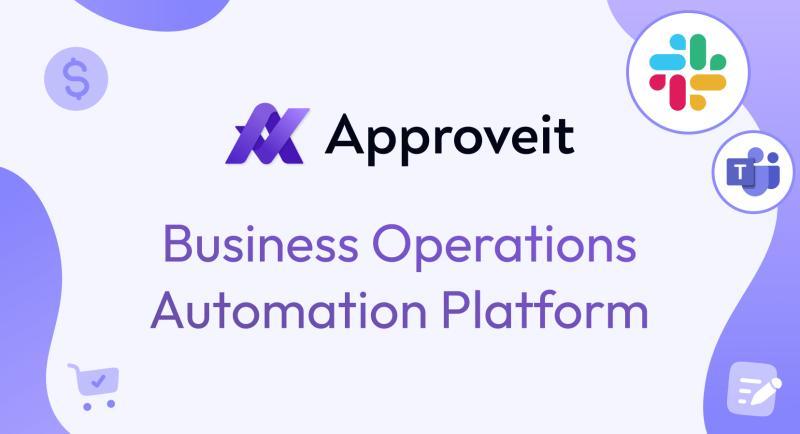
Streamlining Efficiency: Mastering IT Automation Workflows
In the fast-paced world of IT, automation has become an indispensable tool for organizations aiming to maximize efficiency and minimize errors. By implementing it automation workflows https://approveit.today/it-and-security, companies can streamline their operations, enhance productivity, and focus on innovation rather than repetitive tasks.
What are IT Automation Workflows?
IT automation workflows are predefined sequences of tasks that are carried out automatically by software systems. These workflows can encompass a wide array of functions, from simple tasks like automatic backups to complex processes like multi-step deployment pipelines. The primary objective of automation workflows is to reduce the need for human intervention, allowing IT teams to devote their time and resources to more strategic initiatives.
The Importance of Automation in IT
The significance of automation in IT cannot be overstated. Here are several key benefits that organizations can gain through effective automation workflows:

- Increased Efficiency: Routine tasks such as software updates, system monitoring, and data backups can be handled automatically, freeing IT professionals to focus on more critical projects.
- Reduced Errors: Manual processes are prone to human error. Automation significantly reduces the risk of mistakes, ensuring that tasks are completed consistently and accurately.
- Cost Savings: By streamlining operations and improving productivity, companies can lower operational costs related to IT management and maintenance.
- Scalability: Automation workflows can be easily scaled to meet growing business needs, allowing organizations to adapt to changing environments and demands.
- Enhanced Compliance: Automated processes can help organizations adhere to industry regulations and standards by ensuring that every step is documented and verifiable.
Key Components of IT Automation Workflows
A successful IT automation workflow typically comprises the following components:
- Triggers: Triggers are events that initiate the automation process. This could be anything from a scheduled time, a new software release, or a particular condition being met (like system resource usage crossing a threshold).
- Actions: Actions are the specific tasks that the workflow will perform once it is triggered. This may include deploying an application, sending notifications, or generating reports.
- Conditions: Conditions determine whether certain actions should take place within the workflow. For example, an action might only be performed if a server is down or if a security threat is detected.
- Integrations: Many workflows will integrate with other tools, platforms, or services to perform their tasks efficiently. This is crucial for creating a seamless operational environment.
- Feedback Mechanisms: Feedback loops are essential for monitoring and optimizing workflows. These mechanisms can help identify bottlenecks and areas for improvement.
Common Use Cases for IT Automation Workflows
There are numerous applications for IT automation workflows across various business functions. Here are some common use cases:
- Infrastructure Management: Automate provisioning and configuration management of servers and applications, ensuring consistency and rapid deployment.
- Incident Management: Use automation to monitor system health, detect anomalies, and automatically trigger remediation actions to address issues before they escalate.
- Compliance and Security: Automate security updates, vulnerability scanning, and compliance reporting to ensure that systems remain secure and compliant with regulations.
- DevOps Processes: In DevOps, automation workflows can streamline the continuous integration and deployment (CI/CD) processes, enhancing collaboration between development and operations teams.
- Helpdesk Operations: Automate ticketing systems through integrated workflows that can respond to common queries, route issues to the appropriate teams, and track resolution times.

Tools and Technologies for Automation
Several tools and technologies can facilitate the creation and management of IT automation workflows:
- Configuration Management Tools: Tools like Ansible, Puppet, and Chef enable automated configuration, deployment, and management of infrastructure.
- Workflow Automation Platforms: Platforms such as Zapier, Microsoft Power Automate, and Automation Anywhere allow users to create workflows without extensive programming knowledge.
- CI/CD Tools: Tools like Jenkins, GitLab CI, and CircleCI enable the automation of code integration and deployment processes.
- Monitoring Solutions: Solutions like Datadog, New Relic, and Prometheus can automate monitoring and alerting, ensuring systems are healthy and operational.
Strategies for Implementing Automation Workflows
When implementing IT automation workflows, organizations should consider the following strategies:
- Identify Repetitive Tasks: Start by analyzing existing processes to identify tasks that are repetitive, time-consuming, or prone to error.
- Set Clear Objectives: Define what you aim to achieve with automation, whether it’s increasing efficiency, reducing costs, or improving compliance.
- Involve Stakeholders: Engage relevant stakeholders in the automation journey. Their insights can help tailor the workflows to the organization’s unique needs.
- Test and Iterate: After launching an automation workflow, monitor its performance closely and be prepared to make adjustments based on feedback and results.
- Document Processes: Ensure that all automated workflows are well-documented to facilitate maintenance, training, and onboarding of new team members.
Conclusion
In conclusion, IT automation workflows are transforming how organizations operate by enhancing efficiency, reducing errors, and allowing teams to focus on innovation. By leveraging the principles and strategies discussed in this article, businesses can harness the power of automation to streamline their operations and stay competitive in an ever-evolving landscape.